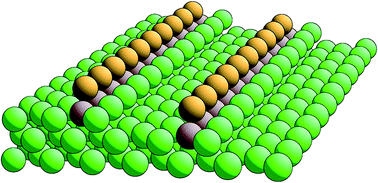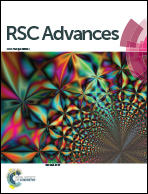Magnetic anisotropy energies of M–Fe wires (M = V–Co) on vicinal Cu(111)
Abstract
One-dimensional transition metal (TM)-Fe nanowires of single-atom width can be formed on a stepped Cu(111) surface. The electronic magneto-crystalline anisotropy and magnetic dipolar (shape) anisotropy energies are calculated for an isolated and deposited TM-Fe wire series that ranges from V to Co along the fourth period of elements. For linear atomic V chains, the shape anisotropy energy is comparable to the electronic energy. The shape anisotropy energy dominates for Cr/Mn chains while it has a minor influence for Co/Fe. The electronic contributions to the anisotropy energies are always dominant for TM-Fe wires in both isolated and deposited cases. All linear structures exhibit axial magnetization except for the Cr chain, which exhibits perpendicular magnetization. All isolated TM-Fe wires have large magnetic anisotropy energies and easy magnetization along the perpendicular axis. In deposited TM-Fe wires, the electronic anisotropy energies are higher for Mn–Fe and Fe–Fe and lower for V–Fe, Cr–Fe and Co–Fe wires. Deposited TM-Fe wires magnetize easily perpendicular to the Cu surface except for Co–Fe, which prefers in-plane magnetization. The large magnetic anisotropies of Fe–Fe and Mn–Fe wires points to potential application in ultra-high density data storage.


 Please wait while we load your content...
Please wait while we load your content...